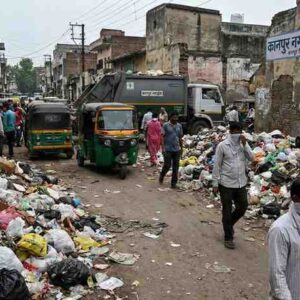New Delhi, India, 2025— A growing number of India’s youth are turning to activism as their preferred means of political engagement, bypassing traditional political structures. This trend is reshaping the nation’s socio-political landscape, as young people find activism more effective in addressing pressing issues like climate change, gender equality, and social justice.
This shift reflects their disillusionment with traditional politics, which they perceive as slow, bureaucratic, and disconnected from grassroots realities.
The Rise of Youth Activism in India
1. A Disillusionment with Political Institutions
Young Indians increasingly feel that traditional politics does not represent their aspirations or address urgent concerns.
- Fact: A 2024 Lokniti-CSDS Youth Survey found that only 28% of young Indians trust political parties, compared to 45% in 2014.
- Observation: Many view political systems as mired in corruption and inefficiency, prompting them to seek alternative platforms for impact.
2. Social Media as a Catalyst
Digital platforms have become a key tool for organizing and amplifying youth activism.
- Data: Over 70% of Indian youth actively participate in online campaigns, using platforms like Instagram, Twitter, and YouTube to mobilize support (NASSCOM, 2024).
- Example: The climate strike movement led by youth groups in 2024 gained nationwide traction, forcing state governments to commit to renewable energy goals.
3. Grassroots Movements
Young activists are driving change through local initiatives, often outside political parties.
- Example: In Maharashtra, a youth-led campaign against deforestation successfully halted a large-scale mining project in 2024, garnering national attention.
Key Issues Driving Youth Activism
1. Climate Change
Environmental degradation has emerged as a top priority for India’s youth.
- Fact: A UNDP report (2024) revealed that 65% of Indian youth rank climate action as their primary concern.
- Impact: Activists have pressured policymakers to strengthen environmental regulations and adopt sustainable practices.
2. Gender Equality and Social Justice
Issues like gender-based violence and caste discrimination have galvanized young people into action.
- Example: The 2023 protests against gender-based violence in Delhi, led largely by college students, resulted in stricter enforcement of women’s safety laws.
3. Digital Rights and Freedom of Expression
Youth are increasingly vocal about digital privacy and press freedom.
- Event: In early 2025, students across universities staged demonstrations against internet shutdowns in tribal areas, calling for transparency in governance.
Why Activism Appeals to the Youth
1. Direct Impact
Activism offers a platform for immediate action and visible change, unlike the long-term processes of traditional politics.
- Observation: Youth leaders often cite the ability to “see results” as a motivating factor for choosing activism over politics.
2. Autonomy and Inclusivity
Activism allows young people to shape movements aligned with their values, free from party hierarchies and constraints.
- Fact: According to a 2024 survey by Youth for Democracy, 62% of young Indians prefer grassroots initiatives for their inclusivity and transparency.
3. Frustration with Bureaucracy
Many feel traditional politics prioritizes power struggles over addressing critical issues.
- Example: Activists leading urban waste management drives in Bengaluru have argued that bureaucracy slows down meaningful policy changes.
Challenges for Young Activists
1. Limited Institutional Support
Activists often lack access to the resources and networks available to political entities.
- Fact: A report by PRS Legislative Research (2024) found that less than 10% of youth-driven campaigns receive formal funding or institutional backing.
2. Risk of Backlash
Activists frequently face legal and societal backlash, particularly on contentious issues.
- Example: Environmental protesters in Himachal Pradesh reported an increase in legal cases filed against them by private corporations in 2024.
3. Sustainability of Movements
Without long-term strategies, many activist movements struggle to maintain momentum and achieve systemic change.
Bridging the Gap Between Activism and Politics
1. Inclusive Political Reforms
Political parties need to create platforms that encourage youth participation and leadership.
- Proposal: Initiatives like mentoring programs for young leaders and reserved spaces for youth in policymaking bodies.
2. Collaboration Between Activists and Policymakers
Strengthen ties between activist groups and political institutions to translate grassroots demands into policies.
- Example: The National Youth Policy (2025) aims to facilitate dialogue between youth movements and legislative bodies.
3. Supporting Civic Education
Introduce civic education programs to empower youth with the skills and knowledge to navigate both activism and politics.
Conclusion: Redefining Participation in Democracy
As India’s youth increasingly turn to activism to drive change, their contributions are reshaping the democratic process. While traditional politics remains vital for systemic reform, the rise of youth-led movements highlights the urgency of addressing critical issues through direct action.
By fostering collaboration between activism and political institutions, India can harness the energy and passion of its young population to build a more inclusive and responsive democracy.












